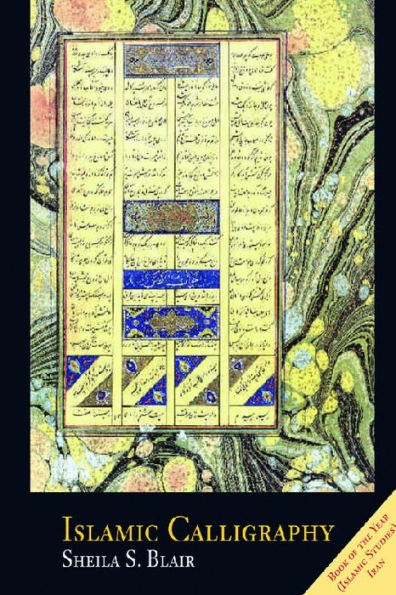Islamic Calligraphy
Joint Winner of the 2007 British-Kuwait Friendship Society Prize for Middle Eastern StudiesWinner of 2008 World Prize for Book of the Year by the Iranian Ministry of Culture and Islamic GuidanceSelected as a 2007 CHOICE Outstanding Academic TitleThe extensive use of writing is a hallmark of Islamic civilization. Calligraphy became one of the main methods of artistic expression from the seventh century to the present in almost all regions from the far Maghrib to India and beyond. Arabic script was adopted for other languages from Persian and Turkish to Kanembu and Malay.Islamic Calligraphy explains this art form to modern readers and shows them how to identify, understand and appreciate its varied styles and modes. Designed to offer a standardized terminology for identifying and describing various styles of Islamic calligraphy, it aims to help Westerners appreciate why calligraphy has long been so important in Islamic civilization.This sumptuous, prize-winning book is an ideal reference for anyone with an interest in Islamic art.
1148006904
Islamic Calligraphy
Joint Winner of the 2007 British-Kuwait Friendship Society Prize for Middle Eastern StudiesWinner of 2008 World Prize for Book of the Year by the Iranian Ministry of Culture and Islamic GuidanceSelected as a 2007 CHOICE Outstanding Academic TitleThe extensive use of writing is a hallmark of Islamic civilization. Calligraphy became one of the main methods of artistic expression from the seventh century to the present in almost all regions from the far Maghrib to India and beyond. Arabic script was adopted for other languages from Persian and Turkish to Kanembu and Malay.Islamic Calligraphy explains this art form to modern readers and shows them how to identify, understand and appreciate its varied styles and modes. Designed to offer a standardized terminology for identifying and describing various styles of Islamic calligraphy, it aims to help Westerners appreciate why calligraphy has long been so important in Islamic civilization.This sumptuous, prize-winning book is an ideal reference for anyone with an interest in Islamic art.
86.0
In Stock
5
1

Islamic Calligraphy
720
Islamic Calligraphy
720Paperback(New Edition)
$86.00
86.0
In Stock

Product Details
| ISBN-13: | 9780748635405 |
|---|---|
| Publisher: | Edinburgh University Press |
| Publication date: | 10/23/2008 |
| Edition description: | New Edition |
| Pages: | 720 |
| Product dimensions: | 7.40(w) x 9.60(h) x 1.30(d) |
| Age Range: | 18 Years |
About the Author
From the B&N Reads Blog
